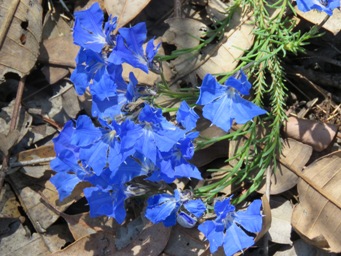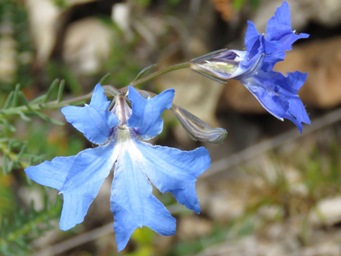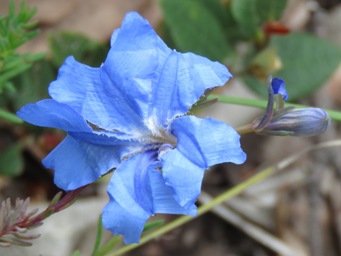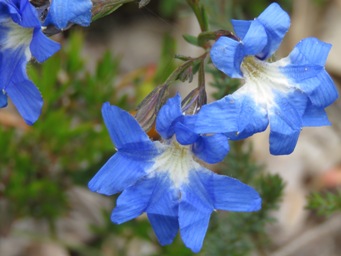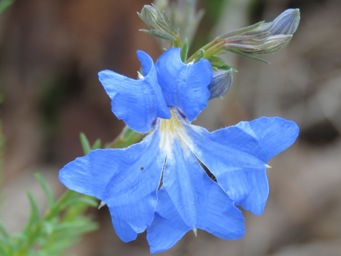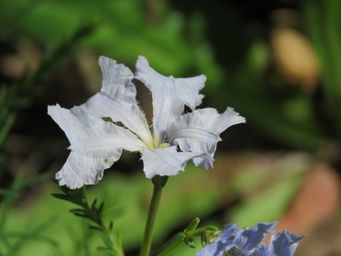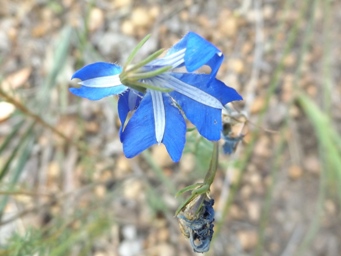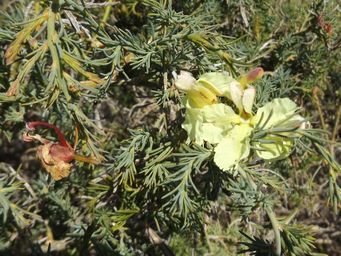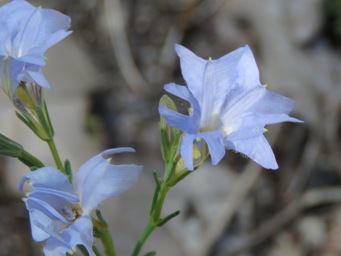Australia So Much to See
Copyright (C) 2013 AustraliaSoMuchtoSee.com. All reights reserved
Sources used for identification of wildflowers including Aboriginal names shown on these pages, and regions where they occur, are
listed under Credits
These pages will feature some of the wildflowers we have photographed in Western Australia,
and where possible, identified. If you are able to help identify further flowers, or correct any I may have wrong, please contact
us.
Information given for each species will give botanical name, known common names, describe the flower, give time of year it
was seen, where it was photographed, and the areas it occurs in. Names have been matched to Florabase which has also been
used to show distribution.
See some of these wildflowers in larger sized photos on our Flickr pages.
Laxmannia squarrosa
A tiny plant with white cluster flowers forming a pompom head. Flowers have three petals with three sepals
interspersed between them, and six stamens. Larger hairy foliage in photo above right is Hemandria pungens
October
Bridgetown,
South West Region, Western Australia and found throughout the South West and Great Southern regions, through the Wheatbelt including
north of Perth and along the south coast to Esperance
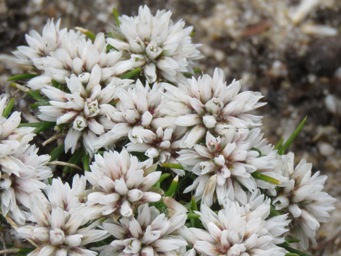

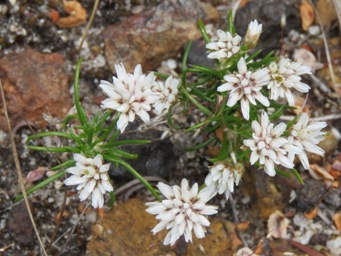
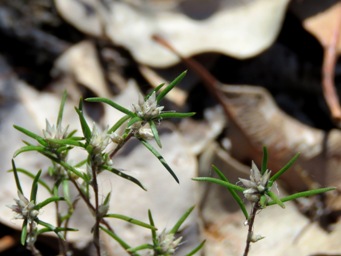
Laxmannia sessiliflora subsp. australis
A tiny somewhat sprawling plant with white cluster flowers forming a pompom head. Flowers
here are not yet open.
May to July, and these buds seen in March,
Bridgetown, South West Region, Western Australia and found
throughout the South West and the lower Great Southern regions, along the south coast to Esperance, and through the northern Wheatbelt, into
the Mid West.
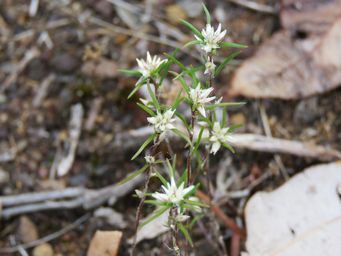
Laxmannia ramosa, Branching Lily
A low growing plant with clusters of tiny flowers at the end f each branch. White three petalled
blooms with six stamens, and purple streaks on the outside of the buds. Foliage is narrow and almost tubular. and alternates
up the stems.
June
Bridgetown, South West region, Western Australia, and found from the Coorow shire in the northern Wheatbelt
through the Wheatbelt, Great Southern, part of the South West, and into the south coastal Goldfields regions.
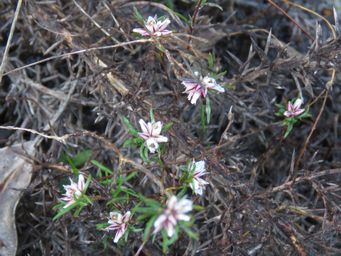
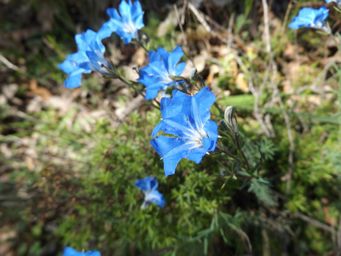
Lechenaultia biloba, Blue Leschenaultia (above, at right and below)
A vivid mid-blue, although shades can vary according
to soil types. May or may not have white in centre. Five petals with three large and two small, crinkly appearance due to shape
and colouration of petals. Width of petals and frilliness can also vary. Grows in large groups, giving a sea of blue. A
low growing bushy plant with prolific flowers.
September to November
Bridgetown, South West Region, Western Australia and found through
the Mid West, Wheatbelt, South West and Great Southern regions
Lechenaultia linarioides Yellow Leschenaultia
Yellow and peach Lechenaultia flowers on a shrub of around a metre in height.
Spring
Lancelin
and Port Gregory in the Mid West, and found in the coastal strip from Shark Bay to Perth, Western Australia
Why Lechenaultia not Leschenaultia?
This Genus is named for the botanist attached to the Baudin expedition to Australia, Jean
Baptiste Leschenault de la Tour. Robert Brown had met Leschenault and assumed to spell his name the French way without the 's'. However,
Bentham introduced the German spelling with the 's' and subsequent writers followed suit as the name was written Leschenaultia, but
reverted to Robert Brown's spelling in the 1950s. The common names of the species maintain the 's' as Leschenaultia. Ref:Wikipedia
